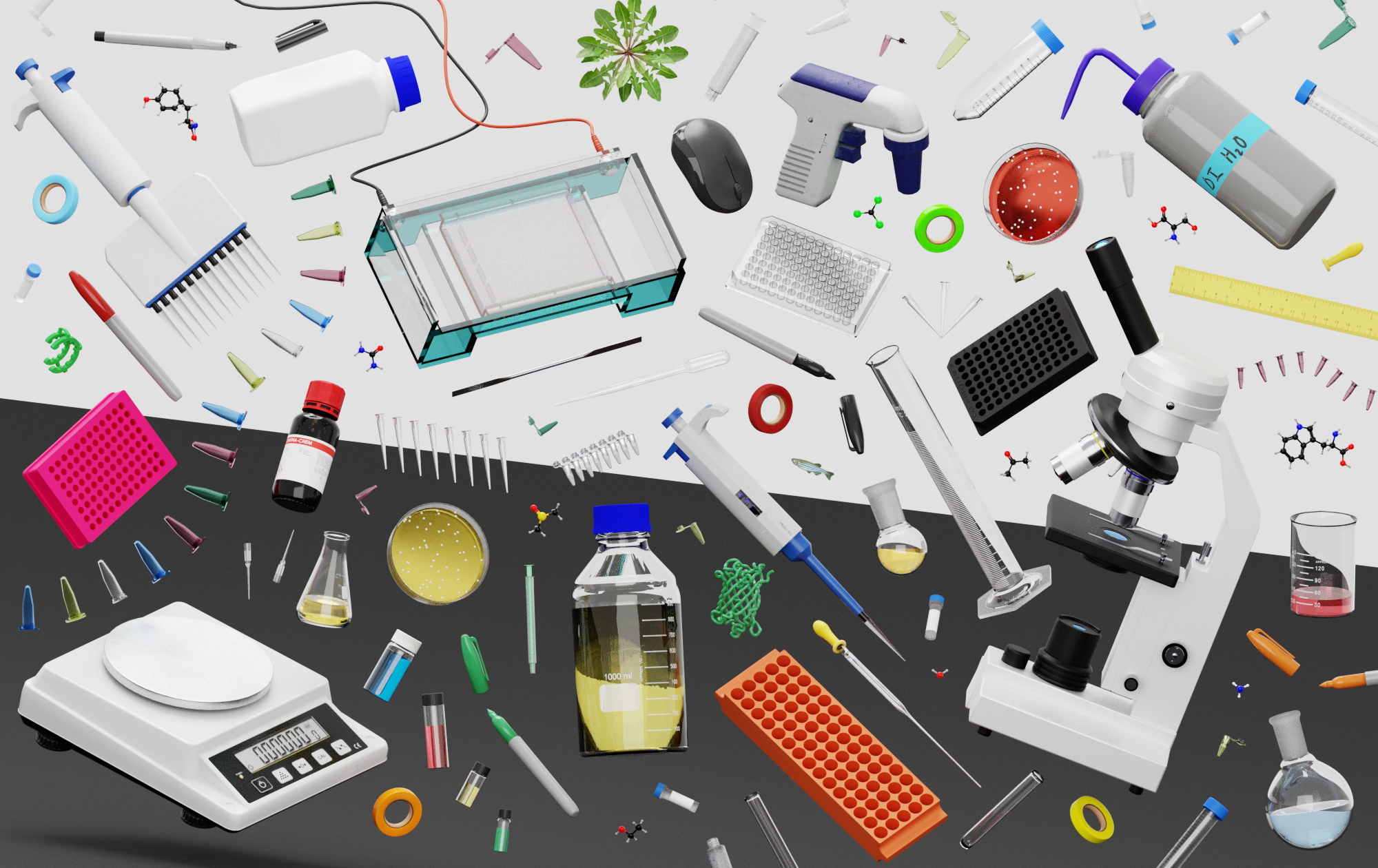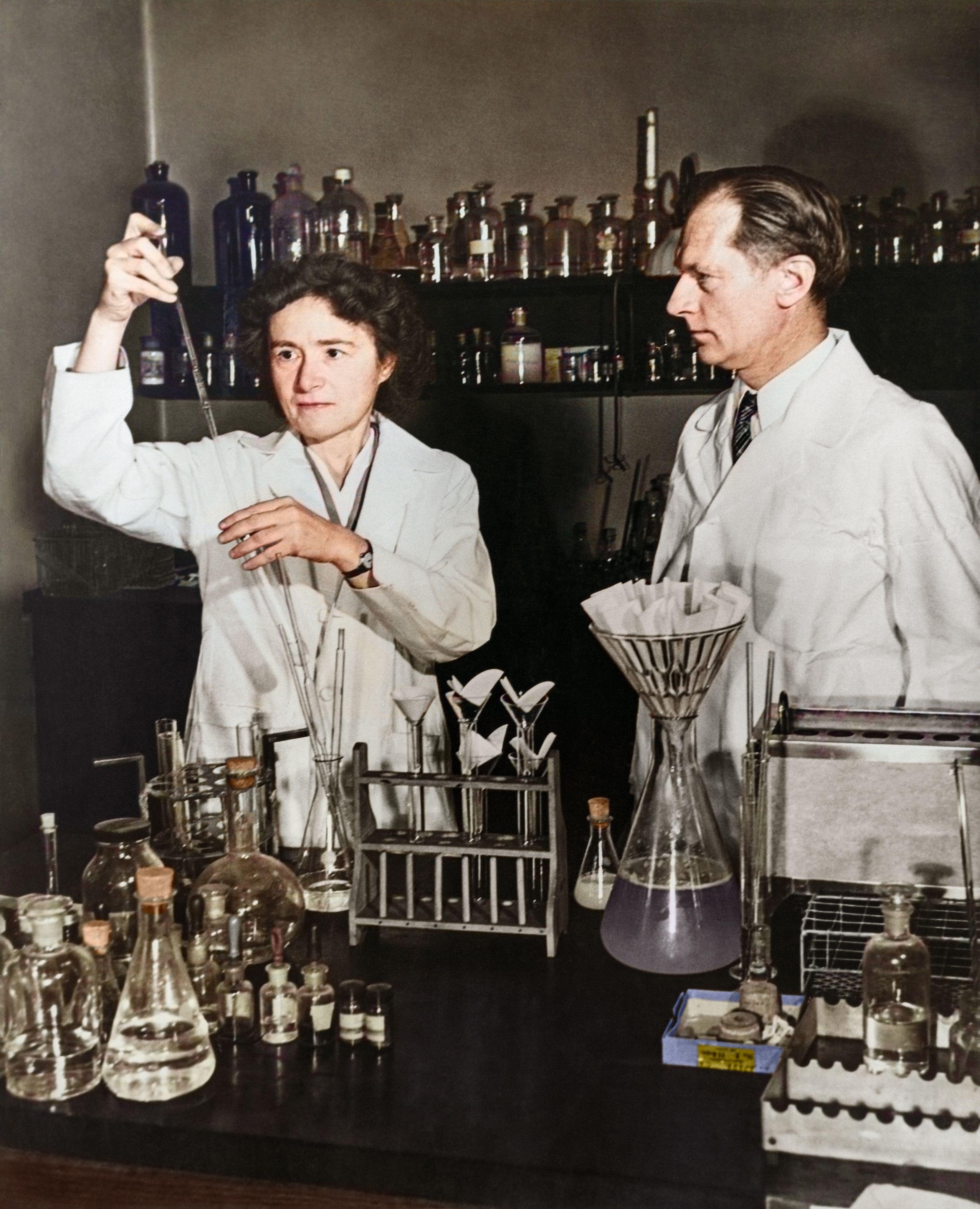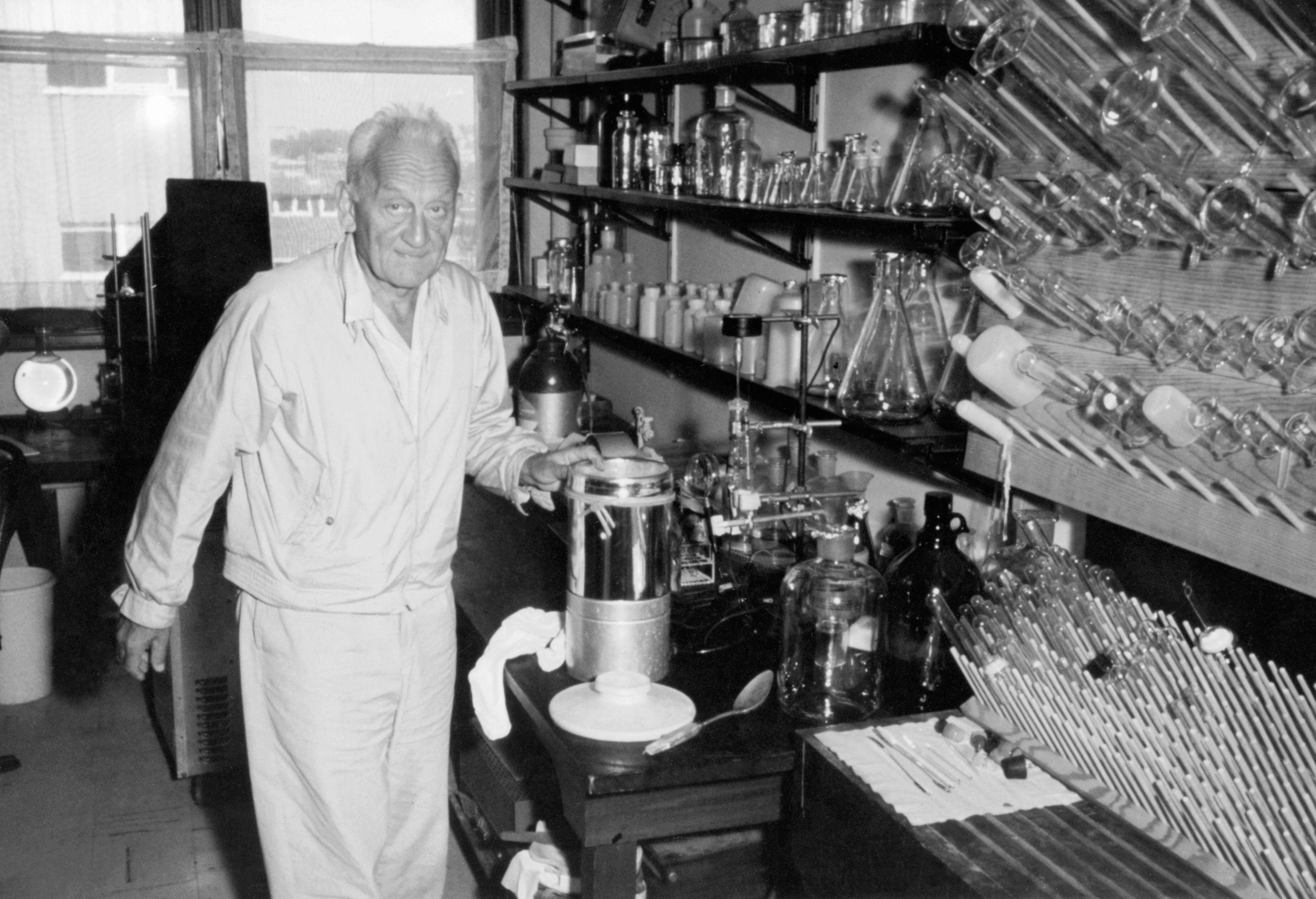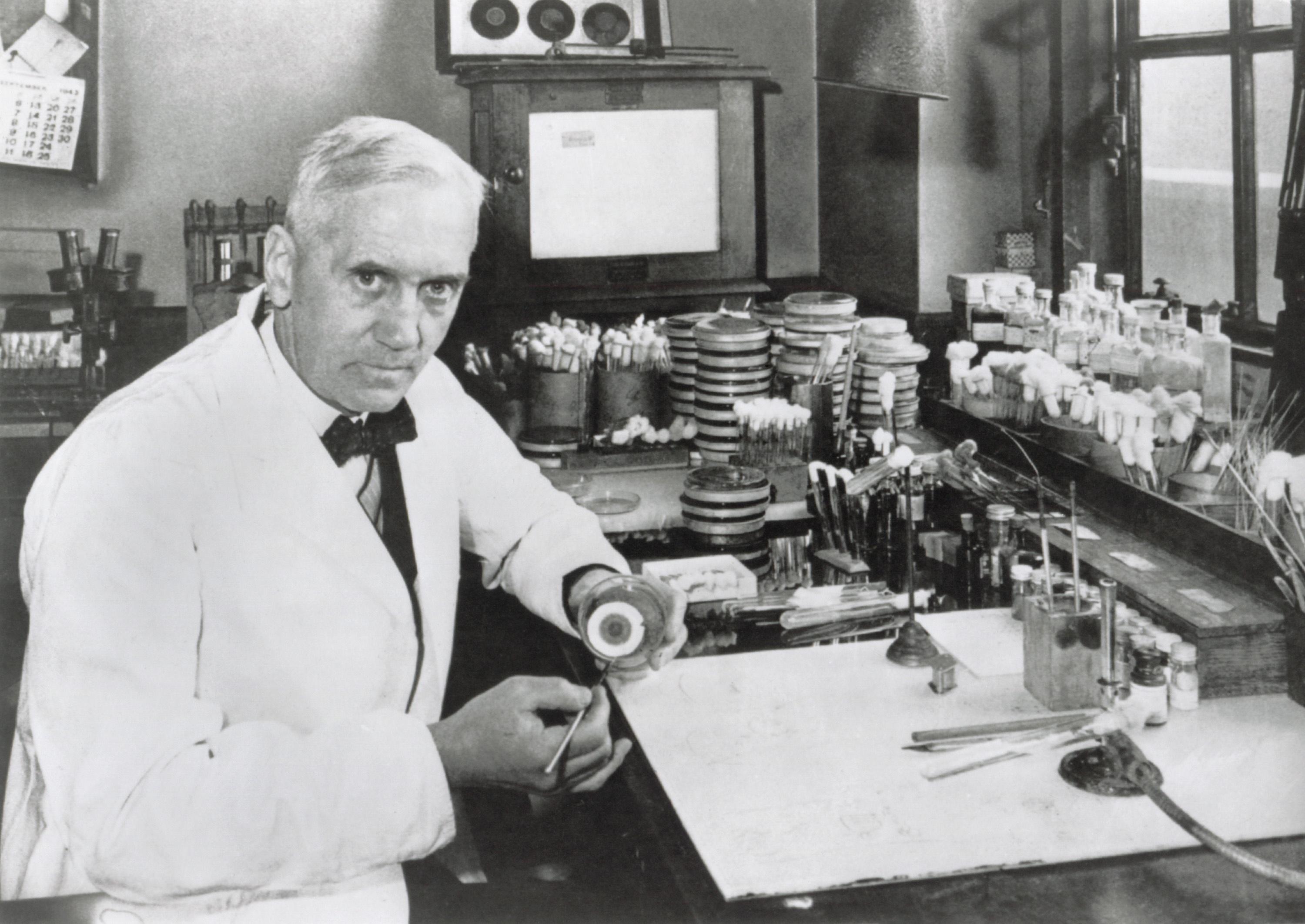Our Next Book: Making the Modern Laboratory

The molecular biology laboratory hasn’t changed much since the 1960s.
If you were to revisit photos of Howard Berg’s cramped Harvard lab, where the details of bacterial chemotaxis were first worked out, or Sydney Brenner’s Cambridge lab, where they cracked the genetic code, you’d recognize almost everything you saw.
In both, glass bottles of reagents, racks of disposable plastic tips, and half-empty boxes of parafilm wrap cluttered the benches. pH meters dangled coils of cords next to old Gilson pipettes, resting on their sides. Ice buckets held a jumble of tubes, labels fading into illegibility. A tabletop centrifuge hummed in the corner, its brushed-metal body dented from hard use. Even the smell, if you could step inside the frame, would be familiar — likely a faint mix of ethanol and agar.



People commonly point to this seeming stagnation in laboratory design while opining on how laboratories of the future ought to look. We clearly need to update our equipment, especially as AI and computational tools advance. But in many respects, the fact that our scientific devices haven’t changed much in the past 50 years also speaks to their tremendous ingenuity and versatility.
Asimov Press’s next book, Making the Modern Laboratory, aims to present the history behind the tools and methods that have helped shape modern biology research — and also to imagine what they might look like in the future.
This illustrated, coffee table-sized volume will delve into the origins of the machines, equipment, organisms, and reagents that have become familiar features of molecular biology laboratories over the last sixty years. The book will close with a set of essays that look forward, offering visions of how we could reinvent the laboratory itself. It is an intellectual companion to other books on these subjects, including The Matter Factory: A History of the Chemistry Laboratory, albeit focused on biology and more visual in nature.
Creating a book of this scope won’t be easy, though, so we’re looking for contributors to help us. All will be paid and listed as coauthors.
We are commissioning contributions of three types:
- Sidebars ($50) are small blocks of text, 150 to 280 words in length, that appear next to featured images.
- Essays ($500) will run 750 to 1,250 words in length.
- Long Reads ($1,500) introduce each chapter in the book and typically run more than 2,000 words in length. Additionally, they will go out to our newsletter subscribers prior to the book’s publication.
Our list of essay ideas follows. We know that with a topic so large, we may have missed something, so reach out if there’s an idea you hoped to see but don’t. Equally, if you think that a short essay topic deserves fuller treatment, write to us and explain why! If you’d like to take part in this project, email editors@asimov.com with your name, selected article idea, the details you’d include in the piece, and why you’re qualified to write it. We’ll prioritize writers with expertise in their chosen subject area.
{{signup}}
Sidebars
- Eppendorf tubes. Why are these plastic tubes shaped as they are (i.e. Why not square bottoms?), and was Eppendorf the company that first invented them? What need did they meet?
- Microscope lenses. What major breakthrough enabled these lenses to be machined with such precision? And what discoveries did they enable when microscopes gained higher resolutions?
- Petri dish. Who is Petri and why did he make these? What were scientists using before?
- pH meter. How did the pH meter come about? How does it work, and how was pH measured before?
- Flow cytometer. A box filled with laser beams that separate individual cells sounds like, well, science fiction. Who thought up the first flow cytometer, and what did it look like? What breakthrough made it possible?
- OD Meter. Who was the first person to quantify the growth rate of bacterial cells by measuring their optical density, and how did they actually do it? How does OD directly relate to cellular concentration, and who came up with the equation to deliver accurate measurements?
- Liquid chromatography. What was the first truly “modern” liquid chromatography device, and who invented it? How did it work compared to the more advanced machines used today?
- Nanodrop spectrophotometer. Who invented this and how? What do these devices actually do, and why do they seem so ridiculously inaccurate even today?
- Electroporator. Who invented electroporation and figured out that you can get DNA into cells by first zapping them with electricity? And then, finally, what did the first machine look like? Were there other uses for these machines before DNA transformations?
- Lab scale. Give key historical examples. Compare their precision with scales used today. What standardized scale was first distributed commercially?
- Vortex Mixer. The first vortex mixer was, it seems, patented in 1962 and used to solubilize liquids. What did people do before that? Why was such a mixer needed? Why can’t we just shake the tubes? “The Evolution of the Vortex Mixer” and “Evolution of Biological Shakers and Stirrers” may have useful details.
- Restriction enzymes. How were they discovered, what do they do, and how many variants are there?
- SYBR Safe is a fluorescent dye used to visualize DNA molecules. Who invented it, and what did researchers use before?
- HeLa cells. A brief description of the origins of HeLa cells, the first immortalized human cell line. And what does it mean for a cell to be “immortalized”?
- C. elegans. How were these little worms discovered, and who figured out they’d be well-suited for biology research? What were some seminal early studies on C. elegans (perhaps in longevity and brain connectome research)?
- Arabidopsis thaliana. Similar to the above essay on C. elegans, how did this become the de facto organism for plant biology?
- Zebrafish (Danio rerio). Similar to above.
- Opentrons. Who founded Opentrons, and what was their first robotic pipette like? What attempts at automation existed before?
- RosettaFOLD and early protein software. What were the first examples of “protein software” used by scientists? How did RosettaFOLD emerge, and who made the key breakthroughs?
- DNA Manipulation Software. What was the first DNA editing program, and what did it look like? How did we go from command-line tools to SnapGene and Benchling?
- Hamilton and Liquid Handlers. Who made the first programmable pipetting robot? How do Hamilton systems work, and how did they become standard in high-throughput biology?
- Mass spectrometer. Who first adapted mass spectrometry for biology? What was the breakthrough that allowed us to measure fragile biomolecules, and how have the machines changed since?
Essays
- Lab Coats. How did these evolve? Are they white because we associate that color with “purity” and “cleanliness,” because they’re easier to bleach, or what? Alexis Carrel famously wore a black lab coat. Could they be improved?
- PCR Machines. Early machines to amplify DNA were cobbled together from heating blocks well before programmable thermocyclers arrived in the late ’80s. Today’s machines are sleek, fast, and run dozens of reactions at once — but the principle is the same: heat, cool, and repeat. How did they come to be? What did early versions look like?
- Light microscopes. Modern light microscopes are the product of centuries of refinement, from crude 17th-century tubes to precision instruments that can reveal a single bacterium. Lens grinding, better illumination, and optical corrections made these advances possible. We’d like a short essay covering some of them.
- Growth media. Potato slices, meat broth, and gelatin were all used to grow microbes before agar existed. We’d like a short essay examining the major changes to growth media through the centuries.
- Deionized water. “Pure” water is never really pure. Early distillation helped, but trace ions and metals remained. The realization that these impurities could wreck experiments led to ion-exchange columns, reverse osmosis, and conductivity monitors. How, finally, did we invent a means to make truly pure water in the laboratory?
- Drosophila. In T.H. Morgan’s “fly room” at Columbia, fruit flies became the model organism of choice to identify genes’ locations on chromosomes. We’d like an ode to the fruit fly that covers why these animals were selected and perhaps also features a bit of Morgan’s setup and experiments.
- E. coli. We’d like a look at Theodor Escherich’s isolation of the microbe in the 1800s, followed by the discovery of BL21 (from a Stanford hospital patient) all the way up to MG1655 and other strains. Trace the history of major E. coli strains and briefly explain how this microbe caught on instead of, say, Bacillus.
- S. cerevisiae (yeast). Humans domesticated yeast thousands of years ago for bread and beer. Scientists later found it’s also a perfect eukaryotic model, with a small genome, easy genetics, and fast growth. How did it become such a dominant model organism?
- Agar. Before agar, microbiologists used gelatin to grow cells, which melted in warm incubators and was also eaten by bacteria. Fanny Hesse recognized that agar, a seaweed extract that is heat-stable and inert, would be a better way to grow cells on solid surfaces in the 1880s. Tell us this story!
- Taq Ligase & Polymerase. Thermus aquaticus survives in Yellowstone’s boiling pools, and its polymerase enzyme can therefore survive PCR’s heat cycles. That single enzyme turned PCR from manual to automated. Later versions, like Q5 and Phusion improved accuracy, but Taq remains the classic. We’d like a short essay covering how Taq polymerase was first isolated and discovered, why it sat unused in a genome database for two decades, and how the “new” versions, like Q5 and Phusion, were made.
- PhiX174. In 1977, British biochemist Frederick Sanger’s team sequenced the tiny PhiX174 bacteriophage genome — the first DNA genome ever read end-to-end. Today, PhiX174 is still used as the standard sequencing control! How did Sanger select this phage, and where did it come from?
Long Reads
- A history of glassware. We’d like a long-form history of laboratory glassware. Corning is probably central to the story, but so are the individuals who made the first Erlenmeyer flask, beaker, and graduated cylinder. Why is each shaped the way it is? How did glassblowers achieve precise dimensions and markings for measurement? This essay should trace the origins of the major glassware we still use today.
- A history of bioreactors. From the earliest fermentation vats to modern stainless-steel ones, bioreactors have transformed biology into an industrial-scale process. They are also a major limit on our ability to “scale” biology, and there is a shortage of biomanufacturing capacity in the United States. We’d like a long-form essay covering the people and innovations that made modern bioreactors what they are. How did engineers first control temperature, pH, and oxygen levels in a sealed vessel? How did bioreactors scale from liters to thousands of liters, and what made it possible to run them reliably? The essay could conclude, perhaps, by explaining why it’s so difficult to make more bioreactors.
- Evolution of DNA sequencing machines. We’d like to commission a “visual” essay covering the history of major sequencing advances. It should cover the first manual protocols with radiolabeled dNTPs, slab gels, automated capillary sequencers, and finally, next-generation machines. It should briefly explain how new chemistry and new forms of automation enabled each step. The essay could end by looking at some more recent technologies, such as sequencing-by-expansion.
- Laboratory of the Future. What should the lab of 2060 look like? We’d like a series of pieces (both non-fiction and speculative fiction) to answer this question. Non-fiction essays should ideally be grounded in history, from past visions of the “automated laboratory” that never came to pass, to current projects like DynamicLand that rethink how people and tools interact. Why has the evolution of the laboratory been so slow, and what challenges stand in the way? What could a lab become if we designed it from scratch?
Thanks for reading. If any of these appeal to you or if you think we missed one, let us know at editors@asimov.com.
Sincerely,
The Asimov Press Team
Always free. No ads. Richly storied.
Always free. No ads. Richly storied.
Always free. No ads. Richly storied.